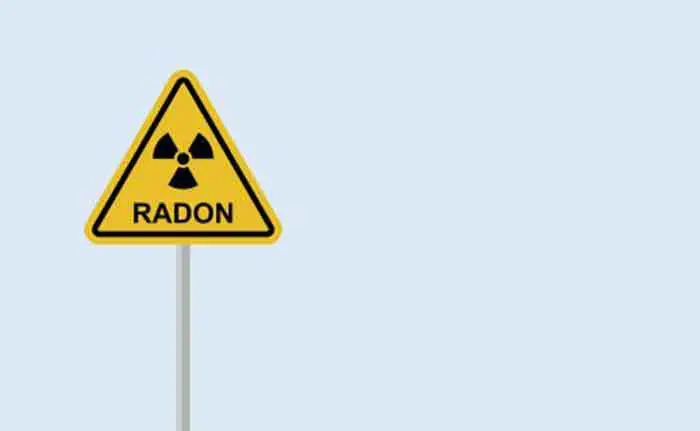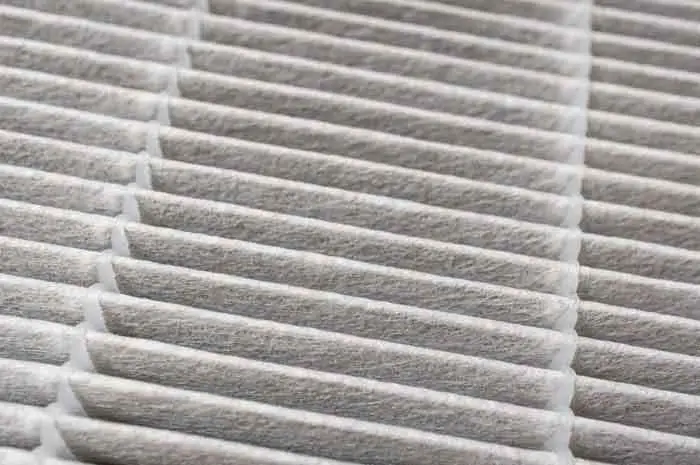Do Air Purifiers Help with Radon? – A COMPLETE Guide

Nobility is more than a state of mind. As it turns out, nobility also applies to a state of matter, namely, gas.
Radon is a noble, inert gas that decays quickly, sticking around for a couple days. This makes it one of the rarest naturally occurring noble gasses.
However, radon is off-gassed by thorium and uranium, which are very stable and common in Earth’s crust.
This means location plays the biggest role when it comes to how common radon is in the surrounding air.
Even if your indoor air seems fine, it might have radon seeping in through the tiny cracks in walls and the basement.
Having no color, smell or taste, radon quietly decomposes into radioactive particles that float inside homes.
To combat this, you may have considered getting an air purifier. But question is, do air purifiers really help with radon?
More...
Health Risks of Radon

The particles emit powerful alpha radiation that can damage the lung tissue DNA and cause cancer if inhaled, even in non-smokers.
One estimate puts yearly lung cancer radon deaths in the US at 20,000.
Radon is a known health risk, leading to lung cancer. This was described in the 16th century as “wasting disease of the miners” that involved muscle loss.
In the 21st century, radon was found off-gassed by South Korean mattresses that were made using rare earth minerals.
The same minerals were used for various underwear, accessories, and building materials, leading to compounding radon contamination.
Common indoors radon exposure is 48 Bq/m3 while outdoors this is 15 Bq/m3. For an average person, these doses amount to about a 0.45% lifetime risk of lung cancer, compared to 0.4% at 0 Bq/m3.
For smokers, the risk of radon lung cancer was increased 25-fold across the table.
What are the symptoms from Radon exposure?
There are no definite signs of radon exposure. However, chronic lung and fatigue problems could indicate radon presence.
Wheezing, coughing followed with blood, loss of appetite and infections could point to radon exposure. Unfortunately, then symptoms tend to appear only when cancer is imminent.
It’s best to schedule a radon test as soon as possible.
How to use Radon test kits
So, how can you tell the kind of risk you’re at from radon? There are widely available test kits or you can hire a licensed professional to help out.
Hardware stores carry radon testing kits. They measure the average presence of radon particles over time.
A radon testing kit should be placed away from walls and ceilings, where poor airflow could skew the readings.
Place the radon testing kit at least 30cm (16 inches) away from a wall.
Preferably, hang the radon testing kit from the ceiling so it hangs at eye level.
Avoid hanging in the bathroom or furnace room or near appliances, where machine operation can skew the results. Water spraying can also carry a small amount of radon.
Each testing kit is specifically designed to measure radon presence across a timespan, which can be between 3-90 days or more.
The instructions arriving with the kit will go in more detail on it.
If you can’t be bothered with instructions, licensed professionals can also apply radon tests. Each US state will have a radon office, with a list of licensed professionals.
Do Air Purifiers Help with Radon?
Just like how human nobility doesn’t mix with the common folk, so too radon avoids interacting with common substances.
It’s very difficult to pick radon out of the air through chemical reactions; it has to be vented out.
1. HEPA Filters

A HEPA filter is a high-efficiency particulate arrester that can remove almost all but not all particles from indoor air.
Since radon particles can ride other particles, HEPA filter is a plausible solution for radon.
However, HEPA filters can’t remove radon itself since it’s a gas.
Air filtration and ventilation can help if you can pinpoint the source of radon seeping in. This is most commonly the basement, foundation or crawl space.
The idea in all radon air filtration and ventilation solutions is to trap radon before it enters the living quarters and vent it out.
This can include installing a suction system beneath the basement, foundation or crawl space.
2. Activated Carbon Filters
Where HEPA filters are preferred to remove most of the allergens, it’s the “Activated Carbon” filter that matters more in dealing with Radon.
Carbon activated filters contain porous carbon that work to trap odors and gasses passing through the filter. Some are strong enough to remove volatile organic compounds and larger particles too.
When it comes to eliminating smells and gasses in your home, an activated carbon filter is a great solution.
So, do air purifiers help with radon? Yes they do! But only with the help of activated carbon.
Other ways to help with Radon
EPA lists several ways of reducing radon concentration, with other common solutions involve suction, sealing of cracks and pressurization.
3. Suction
Depending on how the home is built, there are different ways to reduce radon concentration in your home.
Basement or slab-on-grade foundations utilize several ways of reducing radon concentration:
a) Subslab suction
Subslab suction is the most common method of removing radon. It involves putting suction pipes through the floor slab into the soil beneath.
In most cases, only one pipe is needed but more can be distributed or even inserted from outside the house.
b) Drain-tile suction
Drain-tile suction is the same as subslab suction, except that it uses the natural pressure difference to vent the radon gas.
c) Sump-hole suction
Sump-hole suction is used when the home has a pump to drain unwanted water. The pump can be modified to serve as a vent for radon gas.
d) Block-wall suction
Block-wall suction can be used where the home has hollow block walls in the foundation. The suction action lowers the pressure inside the block wall, venting radon.
e) Submembrane suction
Crawlspace homes can use the submembrane suction system. The ground is covered with a plastic sheet, allowing radon to accumulate, and then a fan vents the radon that gathers beneath.
4. Air Circulation

As a last resort, opening the doors and windows can reduce indoor radon concentration as well.
However, it comes with its own problems. Increased utility bills and insect infestation are the two most common side effects.
As soon as doors and windows are closed, radon reaches its normal concentration within 12 hours.
At best, natural air circulation is a temporary relief measure but not a permanent solution.
An HRV (heat recovery ventilation) can help vent radon that’s entered the living quarters.
HRV circulates the indoor air, replacing it with outdoor air that’s either chilled or warmed using the indoor cooling or heating.
Conclusion - Do Air Purifiers Help with Radon?
Radon is proof that not all nobility should be welcomed in our homes. In this case, it should be politely shown the exit.
This noble gas is not an extinction-level threat for humans but it does worsen the quality of life.
It’s worth scanning for and dealing with in a calm and composed manner.
In fact, radon is worth asking about when buying a property because of how insidiously it can trickle inside.
Even in cases where it hasn’t been scanned for or dealt with, doing either is easy and relatively cheap.
The best way to deal with radon is to identify entry points, minimize time spent there and install suction systems to prevent a buildup.
For that, air purifiers can help BUT are only adequate if they utilize carbon activated filters.
You’re not meant to duke it out with radon. Find measures that count and breathe radon-free air worthy of a king.
